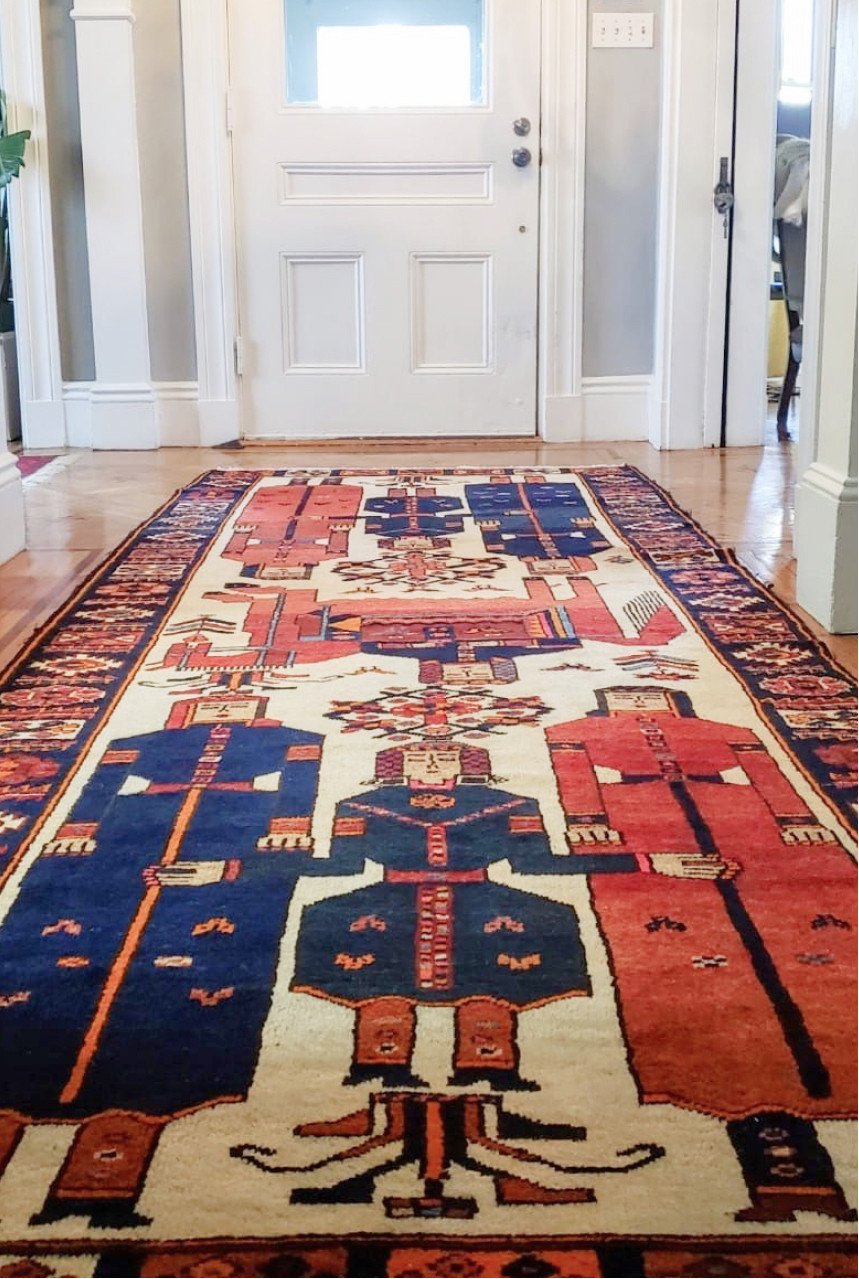We move next to dyes, which generally come in two kinds: natural or artificial. Artificial dyes, also known as chemical colors, are factory produced on a mass industrial scale. Some are decent but for the most part they are commercial and do not last long. Natural or organic dyes, however, are the main part of any old carpet’s success. They are mostly of a vegetable origin but the most exclusive are derived from insects such as cochineal. Preparing natural dyes relied on ancient recipes passed down from father to son and jealously guarded. The dye maker, known as the sabbagh, would guard his recipes jealously and would gather his ingredients from the herbs and roots of the local area. Recipes for the basic colors varied from area to area, depending on the multiple components to each. This is why red, for instance, seems closer to burgundy or cherry in some places while in others it looks more like brick or peach red. With the passage of time, the colors of a carpet acquire a patina of age as they mellow out. How to explain this? This is a simple scientific process called oxidation whereby the oxygen molecules in our atmosphere react with certain chemical in the natural dyes (which after all have a chemical composition like everything else around us) and in a way the latter “evaporate” leaving the wool or silk looking slightly softer. On the artistic side, we have the design of a carpet. A pattern in rural or tribal societies was usually memorized and passed down across generations from mother to daughter. This is why we see great uniformity in the design of nomadic rugs like those of the Turkmen, while allowing for the individuality of expression of each weaver. At times—very, very rarely—the more proficient weavers would weave a sampler rug known as a vagireh that contained the basic elements of field and border design and give it to her daughter(s). These were never meant for commercial sale or use and therefore have become greatly prized and demanded today. In urban societies where carpets are made in professional workshops, their designs are themselves created by professional artists. In the past they were drawn on paper but today they are created using professional graphic design software.
Once these components are all locked in—the material science and the art—the weaver would then engage in engineering to create a carpet. This is a story for another day however!

Acquiring a piece from my dear friend Hadi is truly a journey. We start that journey with a lesson and detailed background on any piece that is of interest. After a thorough discussion regarding the chosen piece or should I say marvel, since Hadi's pieces are truly marvels, Hadi guides us into why he would advise us to acquire it or go for another of his marvels that would suit us more than the one initially chosen. This sincere advice always makes us feel that we are generously taken care of by Hadi. The learning process and honesty in guidance make us go back only to Hadi whenever we are looking for our next beautiful piece for our homes. All I can say is thank you Hadi for your impeccable guidance and service. Abdullah Al-Awadhi, Kuwait 🇰🇼
J’ai fait la connaissance de Hadi lors de la préparation de l’exposition « L’Empire des roses, chefs-d’œuvre de l’art persan du 19ème siècle » qui a eu lieu au Louvre-Lens en 2018 et à laquelle il a participé par le prêt de tapis exceptionnels. J’avais alors été impressionnée par ses connaissances et sa passion pour les tapis orientaux. Cette rencontre a marqué le début d’une collaboration riche et fructueuse. Elle a notamment permis au musée du quai Branly-Jacques Chirac de voir ses collections iraniennes s’enrichir de plusieurs tapis et tentures dont certains n’ont pas leur équivalent dans les musées occidentaux. Ce que j’apprécie chez Hadi ? C’est son professionnalisme, son dynamisme et l’engouement qu’il a pour son métier ! Hana Chidiac, Curator of the Middle East Department at the Musee Quai Branly - Jacques Chirac, Paris, France 🇫🇷
The idea of purchasing valuable rugs and other artwork online from an overseas seller is daunting for several reasons, not least of which is the fact that, not being able to examine and feel the rug for yourself, you are never entirely certain that the origin, age or condition of the rug corresponds with the dealer’s description. For me, I could never take this step unless I had absolute trust in the integrity of the dealer, and my recent experience with Hadi confirms that my faith in him was well placed. Every detail of the antique rug expertly explained by Hadi was accurate and when I finally received the actual rug, it turned out to be even more stunning than his photos depicted. F. Alsagoff, Singapore